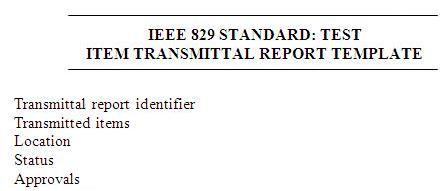Product risk is the possibility that the system or software might fail to satisfy or fulfill some reasonable expectation of the customer, user, or stakeholder. (Some authors also called the ‘Product risks’ as ‘Quality risks’ as they are risks to the quality of the product.) [Read more…] about What is Product risk in software testing?
Testing
What is configuration management in software testing?
Configuration management is a topic that often confuses new practitioners. So, let me describe it briefly:
- Configuration management determines clearly about the items that make up the software or system. These items include source code, test scripts, third-party software, hardware, data and both development and test documentation.
- Configuration management is also about making sure that these items are managed carefully, thoroughly and attentively during the entire project and product life cycle.
- Configuration management has a number of important implications for testing. Like configuration management allows the testers to manage their testware and test results using the same configuration management mechanisms.
- Configuration management also supports the build process, which is important for delivery of a test release into the test environment. Simply sending Zip archives by e-mail will not be sufficient, because there are too many opportunities for such archives to become polluted with undesirable contents or to harbor left-over previous versions of items. Especially in later phases of testing, it is critical to have a solid, reliable way of delivering test items that work and are the proper version.
- Last but not least, configuration management allows us to keep the record of what is being tested to the underlying files and components that make it up. This is very important. Let us take an example, when we report defects, we need to report them against something, something which is version controlled. If it is not clear what we found the defect in, the programmers will have a very tough time of finding the defect in order to fix it. For the kind of test reports discussed earlier to have any meaning, we must be able to trace the test results back to what exactly we tested.
Ideally, when testers receive an organized, version-controlled test release from a change-managed source code repository, it is along with a test item trans-mittal report or release notes. [IEEE 829] provides a useful guideline for what goes into such a report. Release notes are not always so formal and do not always contain all the information shown.
Configuration management is a topic that is very complex. So, advanced planning is very important to make this work. During the project planning stage – and perhaps as part of your own test plan – make sure that configuration management procedures and tools are selected. As the project proceeds, the configuration process and mechanisms must be implemented, and the key interfaces to the rest of the development process should be documented.
What is test monitoring in software testing?
Test monitoring can serve various purposes during the project, including the following:
- Give the test team and the test manager feedback on how the testing work is going, allowing opportunities to guide and improve the testing and the project.
- Provide the project team with visibility about the test results.
- Measure the status of the testing, test coverage and test items against the exit criteria to determine whether the test work is done.
- Gather data for use in estimating future test efforts.
[Read more…] about What is test monitoring in software testing?
What are the estimation techniques in software testing?
There are two techniques for estimation covered by the ISTQB Foundation Syllabus.
- One involves people with expertise on the tasks to be done and
- Other involves consulting the people who will do the work .
The first one involves analyzing metrics from past projects and from industry data.
Let’s look at both of them one by one. [Read more…] about What are the estimation techniques in software testing?
Estimating what testing will involve and what it will cost?
As we know that testing is a process rather than a single activity. Hence, we need to break down a testing project into phases using the fundamental test process identified in the ISTQB Syllabus: planning and control; analysis and design; implementation and execution; evaluating exit criteria and reporting; and test closure. [Read more…] about Estimating what testing will involve and what it will cost?
